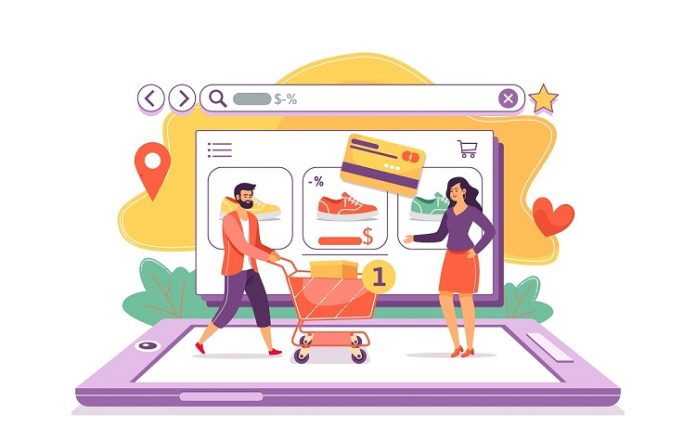The last thing you want is for your ecommerce website to confuse and frustrate customers. If they can’t find what they need, or if the layout looks cluttered and complicated, then it’s no wonder that many shoppers abandon their carts before they even get started.
So how do you make sure that visitors see things as clearly as possible? Here are six E-commerce website designing tips for creating an easy-to-use ecommerce store.
Visually Appealing Website
When you create an ecommerce website that’s both useful and visually appealing, you are more likely to attract customers. You want your website to be easy for people to navigate, so they can easily find the products or services that interest them.
If it’s not easy enough for users to find what they want at the right place, then their eyes naturally drift away from the page instead of staying focused on what’s on it. This makes it harder for them read through all the information in one sitting and remember what they’ve seen later when making a buying decision.
Design with your Audience in Mind
The first step to designing a website is understanding who you’re designing for. What you need to know about your audience will help you design a site that is easy to navigate, read and use.
Asking questions like these:
- What are their expectations of my product or service?
- How do they want me to make them feel when they visit my page?
- What kind of mood or feeling would they like me to create through an image/video on my page?
Answering these questions before designing actual website will solve half of your confusion, and clear the ecommerce website designing concept.
Provide a Streamlined Checkout
When it comes to ecommerce, the more streamlined your checkout process is, the better. Your customers will feel more comfortable and secure about making purchases from your site if they have an easy way to complete their purchases.
Also read: What You Should & Shouldn’t Do When Designing Your Business Website
Easy checkout without having to navigate through complicated steps or long lists of fields on every page makes more ease process for your ecommerce business.
Interact with Customers on Social Media
Social media is a great way to interact with your customers and promote your brand. You can use it to respond to comments and questions, which will help you build relationships with your audience.
Social media also allows you to target specific groups of people who are interested in what you’re selling. For example, if you sell men’s shoes online, creating posts that cater specifically toward men will increase engagement on those posts.
Test Your Website Design to Improve Performance
To test your website design, you can use tools such as Google Analytics. This is an easy way to see which design works best for your site and how it performs in different situations. Test multiple designs until you find one that works best for the various pages on your site and its users.
Once you’ve found a winning combination of elements like color palettes, layout types, make any changes based on what results from testing sessions like this one might suggest. If you aren’t tech savvy and want to build site in quick time, you can opt for readymade ecommerce WordPress templates from the trusted sources.
Highlight the Benefits of Your Products and Services
A website is only as good as its content, so make sure you have a clear call to action on your homepage. This could be anything from sharing a coupon code for a discount or free shipping on an order, to inviting visitors to sign up for a newsletter that offers exclusive discounts and promotions.
You should also include testimonials from previous customers who were pleased with their experience buying from your company. This will show potential new customers how much they can enjoy using your products or services.
Once they’ve clicked through, you’ll want them to see exactly what they’re getting at checkout right away. One way we recommend doing this is by offering multiple images of each product along with detailed descriptions. This will help to reduce the confusion and customers question about whether or not something matches up with expectations.
Final Thoughts
We hope that this article will help you decide which best practices to use for your next ecommerce website design project. The key is to keep the customer in mind and think about how they will want to interact with your site.
Remember, the most successful online stores aren’t just visually appealing. They also provide useful information so customers can make informed decisions when buying products or services online. The more time you spend on these details, the better off everyone will be.





